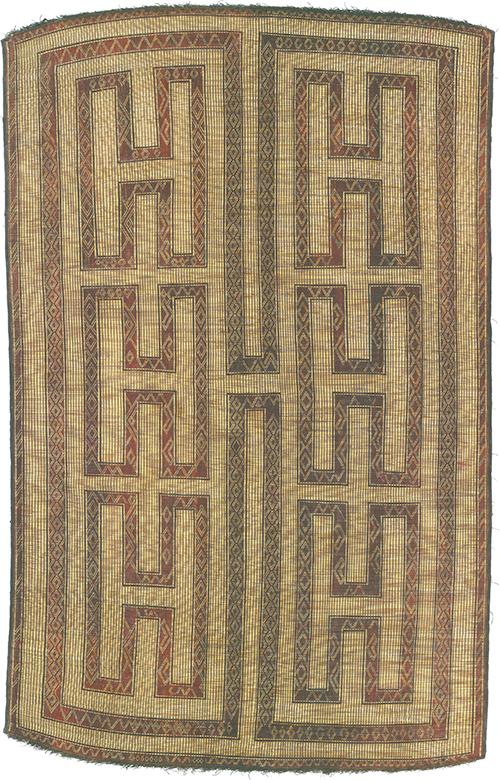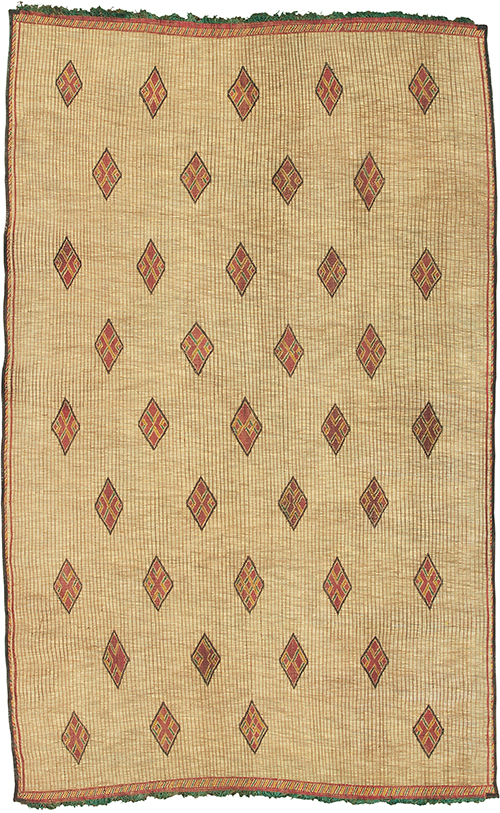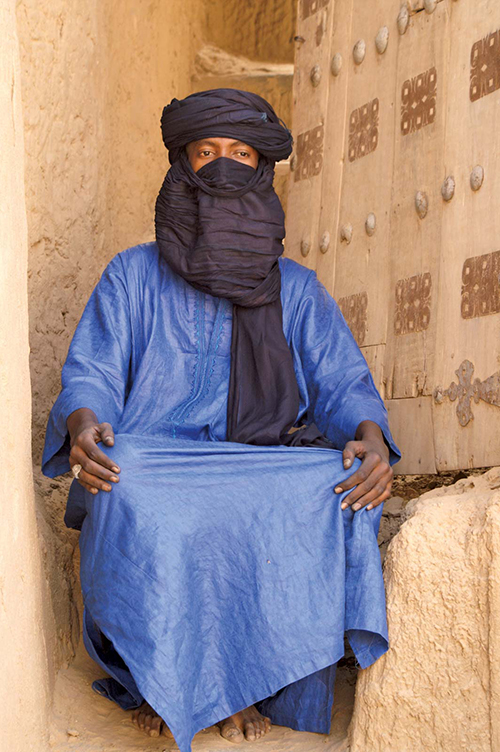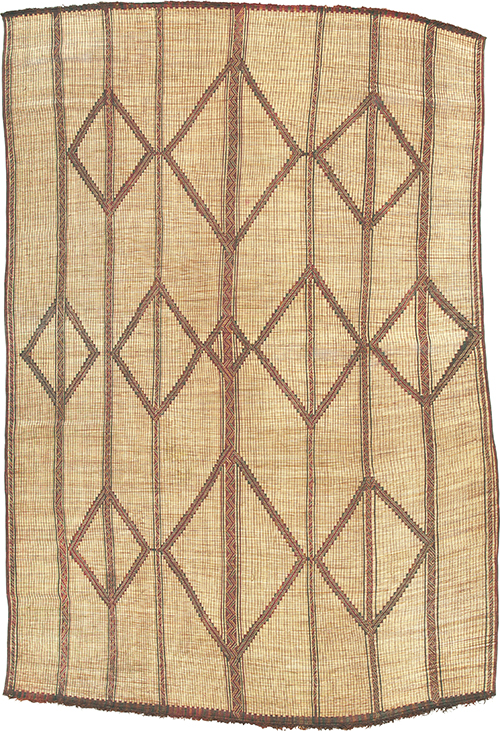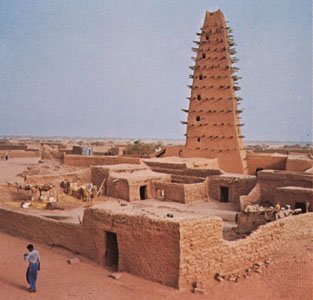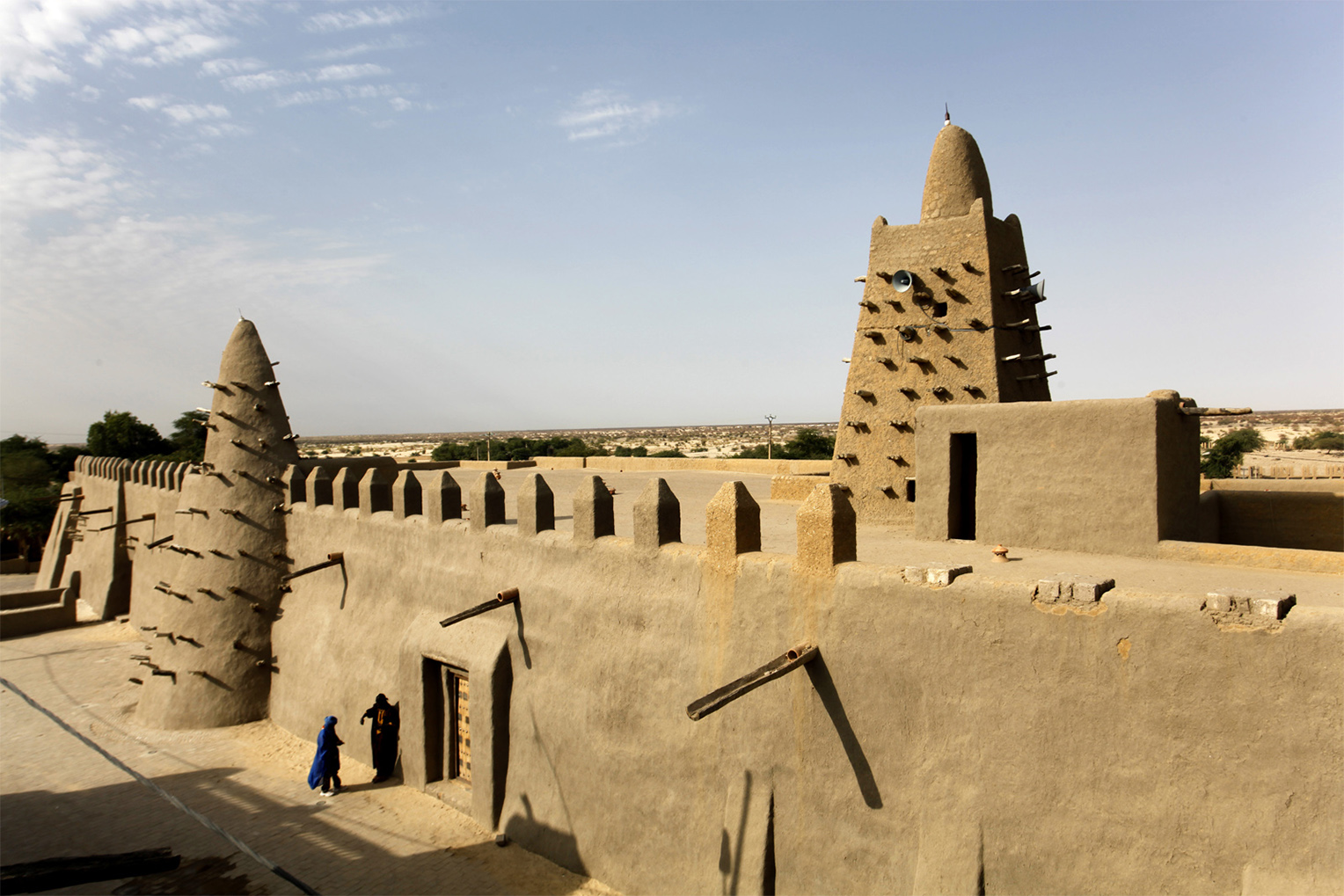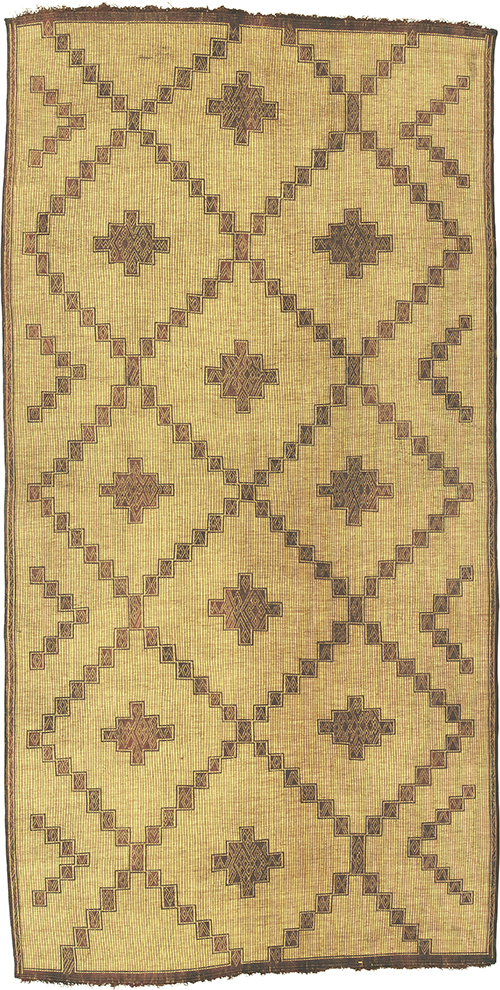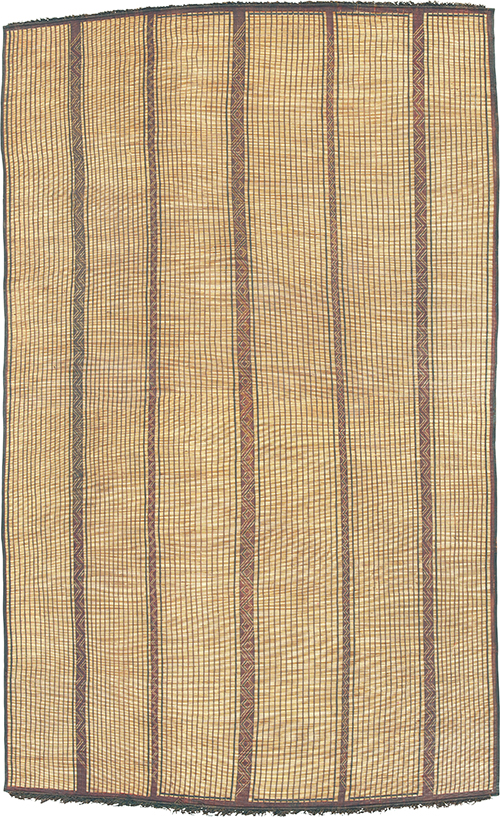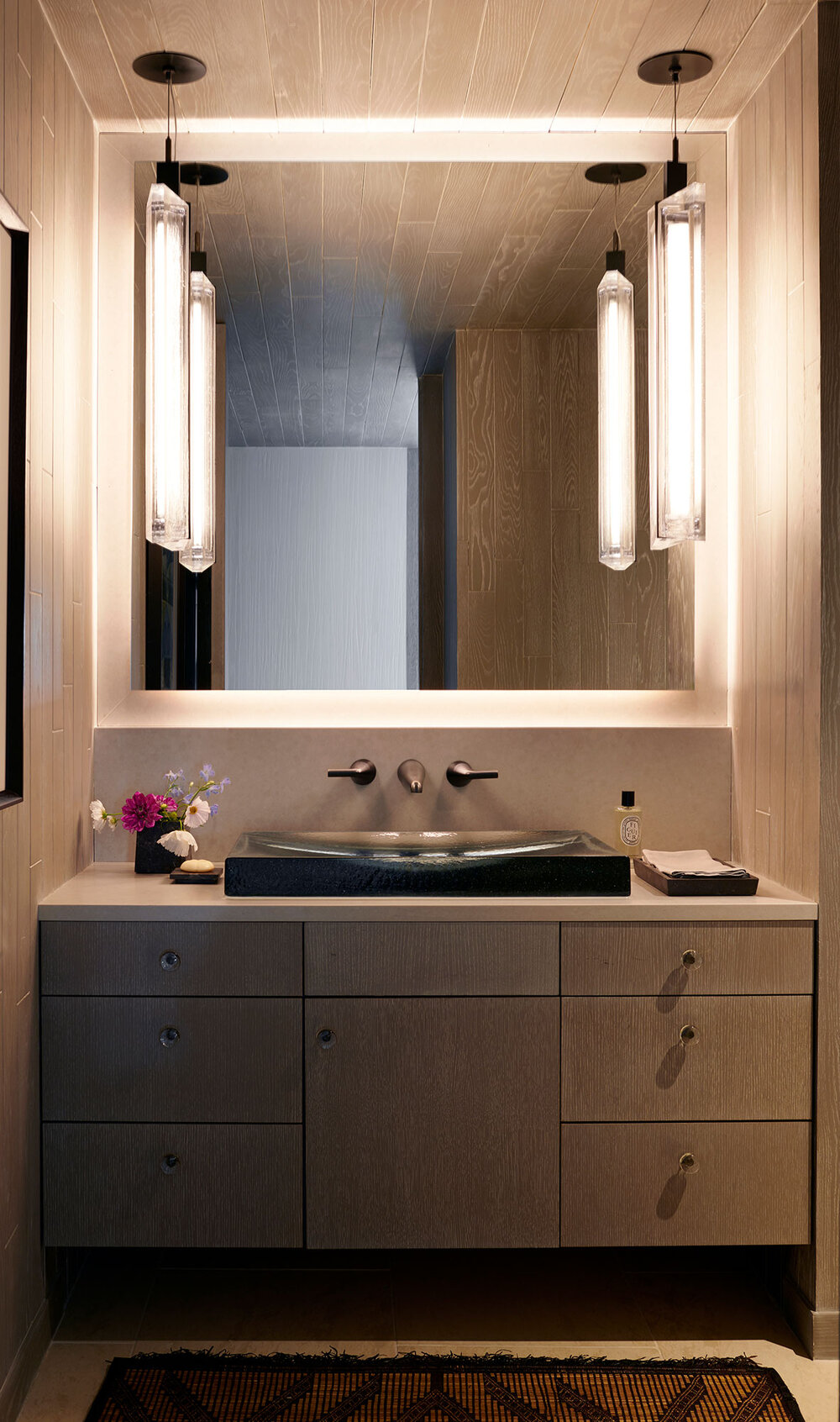August 05, 2020
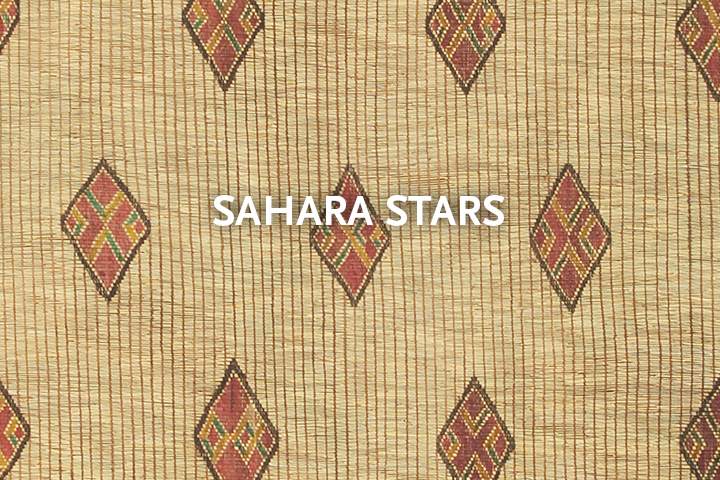
In recent years, Tuareg mats have become much sought after by top interior designers. These handmade reed and leather mats woven by the nomadic Tuareg people can add a rustic and warm elegance to an interior. Either on the floor or hung on the wall, they give depth and texture to a room. FJ Hakimian has a large selection of vintage Tuareg mats and each one is unique, with a variety of fascinating symbols and geometric designs that make it a captivating individual work of art.
Tuareg Mat #15110. Morocco ca. Mid 20th Century. 11'0" x 6'11" (335 x 211 cm)
Tuareg Mat #15308. Morocco ca.1940. 11'1" x 7'1" (338 x 216 cm)
Veiled Tuareg Man. Source: https://www.britannica.com/topic/Tuareg
Because they are vintage, the mats have a beautiful patina of age and wonderful character in the subtly darkened reed and aged leather. They are perfect in modern spaces, giving contrast and balance to industrial glass, concrete, and steel by adding a beautiful warmth and touch of nature; they also work in traditional interiors, adding a point of interest, contrast, clarity, and evocation of travel to the distant ends of the earth.
Tuareg Mat #15360. Morocco ca. 1940. 15'0" x 10'2" (458 x 310 cm)
Mosque in Agadez, Niger. Source: https://www.britannica.com/place/Agadez
The mats come from the legendary Sahara Desert in West Africa. This area was recently the subject of the Metropolitan Museum of Art’s fascinating exhibition “Sahel: Art and Empires on the Shores of the Sahara,” which explored the region’s complex cultural landscape. The Tuareg, whom Westerners have tended to view romantically as the fierce, dignified “blue people” (because the men are veiled in draped indigo garments), have historically controlled caravan traffic through the Sahara. The quasi-mythical land they inhabit is the size of Western Europe, and yet they do not have their own country. The largest Tuareg town is Agadez, with its famous mosque built in 1430.
The Tuareg are distinct from the Arab people of North Africa and the Black Africans of the South. According to legend, they first arrived in the Sahara around 400 AD under their queen Tin Hinan. In the twelfth century, a Tuareg family founded Timbuktu, the near mythical city which became a renowned intellectual center and eventually became synonymous with the most exotic and remote places in the world.
Timbuktu, Mali: Great Mosque. Great Mosque, built by Emperor Mūsā I of Mali in 1327, Timbuktu, Mali.Source: https://www.britannica.com/place/Timbuktu-Mali
The Tuareg write using the Tifinagh script, with letters rich in sacred symbolism. The origins of the alphabet date to the Neolithic age and precursors to the letters can be seen carved on rocks in the Atlas Mountains. The letter shapes include diamonds, triangles, squares, rectangles, broken lines, chevrons, branches, crosses—all shapes that are woven into decoration on the mats. Some symbols have magical or spiritual associations with powerful places, often linked to specific clan funerary complexes.
Tuareg Mat #15296. Morocco ca. 1940. 17'4" x 8'11" (529 x 272 cm)
One of the most ubiquitous and lovely designs found on the mats is the star. This makes sense for a nomadic people who for centuries relied on the night sky for survival and used the stars to guide them through the Sahara.
Tuareg Mat #15367. Morocco ca. 1940. 15'3" x 9'2" (465 x 280 cm)
The Tuareg people value their artisans and see them as mediators with the spirit world. In their designs, a circle might represent a chameleon eye, the half-circle a moon; cross-hatching represents crocodile teeth; the triangle and diamond are protective symbols and are associated with female divinity and the life-giving power of women. The meanings of the designs are explained in the sacred songs of the Tuareg. The designs, in turn, tell stories of their culture and are symbolic representations of their environment and cosmology, powerfully human with universal aesthetic appeal that translates across cultures.
Interior Design by Wesley Moon. Photography by William Waldron.

